Two years ago, in the early days of the COVID-19 pandemic, the Inter-Faith Care Center in Carlton had 96 residents in its nursing facility. Last week the nonprofit had 63 residents.
It’s not because of a lack of interest in nursing beds in the small northeast Minnesota city, said administrator Tim Zwickey. It’s because there aren’t enough workers to care for 96 people.
“The problem that we all have is that our wages are not adequate enough to attract and retain workers to care for the people that we’re entrusted with,” Zwickey said.
With fewer employees and now fewer residents, Zwickey said that Inter-Faith — opened in its current form 1967 and owned by six churches — is running out of cash reserves and in a tenuous situation.
Inter-Faith’s story is not an outlier across Minnesota. Industry advocates say about 11 percent of nursing homes could close soon if their financial outlook doesn’t improve, and other parts of the senior care spectrum are facing closures as well.
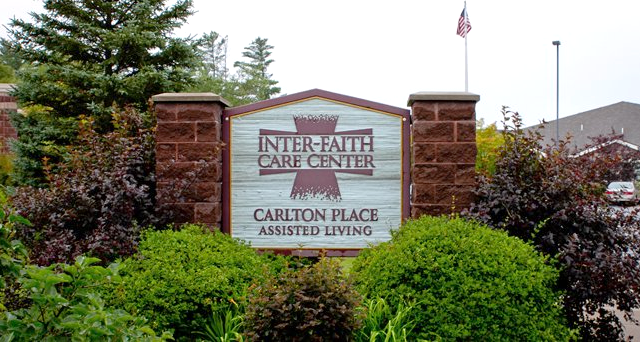
Inter-Faith Care Center
Two years ago, in the early days of the COVID-19 pandemic, the Inter-Faith Care Center in Carlton had 96 residents in its nursing facility. Last week the nonprofit had 63 residents.
But a potentially huge infusion of cash into the system — championed largely by the Republican-led Minnesota Senate — is in limbo at the state Legislature, where top leaders failed to complete a deal to spend a historic budget surplus before the regular legislative session ended May 23. One key stumbling block has been the health and human services budget: Republicans want to use most of $1 billion for long-term care while the DFL-led House is pushing to spread the money out among several priorities, including more money to help child care businesses.
“The long-term care system is on the verge of collapse like we’ve never seen before,” said Sen. Jim Abeler, an Anoka Republican who chairs the Senate’s Human Services Reform Finance and Policy Committee. “I feel like I’m a prophet in the Old Testament going on and on about it, saying: ‘The flood is coming.’”
A struggling industry
For months leading up to this year’s legislative session and during it, officials in long-term care have painted a dire picture of the status quo in Minnesota.
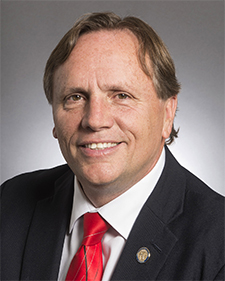
State Sen. Jim Abeler
In early May, the Long-Term Care Imperative — a coalition of two prominent trade groups — estimated that 23,000 direct care positions were vacant. Libbie Chapuran, a spokeswoman for one of those organizations, LeadingAge Minnesota, said during an April hearing in Abeler’s committee that a survey showed 78 percent of nursing homes and 35 percent of assisted living facilities were limiting admissions.
“It’s not that they don’t want to care for these individuals who come to their door,” Chapuran said. “They just don’t have the staff.”
Since 2019, 15 nursing homes have closed throughout Minnesota. Of those, four had closed in 2022, Chapuran said. An April survey of 335 nursing homes and assisted living facilities also found about 40 nursing homes and 400 assisted living providers — serving about 14,000 seniors — indicated they might close.
At Inter-Faith in Carlton, the issue is wages, Zwickey said. The vast majority of the organization’s revenue comes from Medicaid patients in nursing, whose costs are reimbursed by payments from the federal government and the state of Minnesota. With those reimbursement rates, which are set by the state, Inter-Faith is paying nursing aides about $17.50 an hour on average. Since the job often entails long hours, weekend shifts and handling bodily fluids, it’s not an attractive prospect for someone who can, for one example, work as a teller at a new bank branch in nearby Cloquet making $20 an hour, Zwickey said.
Zwickey said Inter-Faith was fully staffed at the start of the pandemic, but people have left because of burnout and other jobs.
‘Historic’ Senate budget plan
The state and federal government did spend money to reinforce long-term care facilities, including nursing homes, during the pandemic. For instance, Zwickey said Inter-Faith got $1.4 million from the federal Paycheck Protection Program established in the $2.2 trillion CARES Act passed in March of 2020. That helped the care center break even for a year.
In Minnesota, Walz took steps that included deploying National Guard soldiers to nursing homes, paying to recruit and train more than 1,000 new certified nursing assistants and approving $50 million from the federal $1.9 trillion American Rescue Plan passed in 2021 to help long-term care facilities hire and retain employees. The state temporarily raised reimbursement rates for nursing homes. The Legislature this year also approved $500 million in payments to pandemic frontline workers, including long-term care employees.
Still, the long-term care industry has argued they need more help, and for that help to not come in the form of one-time pandemic relief.
As a result, Senate Republicans made a big push to spend on the industry. They passed a $1 billion bill with bipartisan support to fund long-term care over the next three years. Nearly all of the money would have boosted rates, including for nursing homes, personal care assistance, home care providers and disability service providers. Nursing home rates would have received a $225 million boost, and the spending was big enough for a $2-an-hour wage increase for nursing home workers, Abeler estimated.
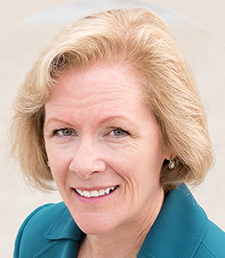
Patti Cullen
Patti Cullen, president and CEO of the Care Providers of Minnesota, said if the full Senate position had been adopted, it likely would have been the biggest investment in state history for long-term care.
House Democrats and Walz, meanwhile, had their own plans for investing in long-term care, including by raising PCA rates as part of a more than $200 million plan for revitalizing the long-term care workforce. DFLers also had ambitious plans to spend on the child care industry. The total House Health and Human Services proposal would have spent $2.7 billion over the next three years in state and federal money, though it would not have raised nursing home rates.
As part of a broader deal for using the state’s budget surplus — which now totals $7.1 billion — on a combination of spending, tax cuts and reserves, lawmakers agreed to use $1 billion on health and human services programs. But they never reached a deal on the HHS budget, or several other budget areas like public safety, before the regular legislative session expired in late May.
The last public offer from the Senate included $820 million for long-term care, meaning Republicans still wanted to use most of the allotted cash for the industry. By contrast, the latest public DFL offer had more than $500 million for long-term care, $150 million for child care and $80 million for homelessness aid. That did include higher rates for nursing homes and many others in the long-term care system.
There are a host of reasons why Democrats didn’t agree to spend as much on long-term care problems, and particularly on nursing homes, even if they agree the industry needs help.
One is due to competing priorities, like child care. Another is a belief that nursing homes don’t need as much of an influx of state money as Abeler and the industry have proposed. DFLers have agreed to only some of the Senate’s nursing home rate plan.
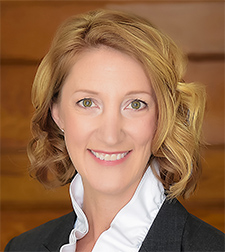
State Rep. Jen Schultz
State Rep. Jen Schultz, a Duluth Democrat who chairs the House’s Human Services Finance and Policy Committee, said the complex reimbursement system for nursing homes is crafted to hike payments to cover increased costs over time. So there is more money expected to flow into the industry without the Senate’s plan.
Dan Pollock, an assistant Department of Human Services Commissioner overseeing senior care, said those increases can cover wages. “It’s a cost-based reimbursement, so when their costs go up they get reimbursed,” Schultz said.
Schultz also said any rate increases now can become far more expensive over time, and there is remaining pandemic relief money from the feds that hasn’t been tapped by the industry.
And she highlighted a survey from the Walz administration showing fewer nursing homes surveyed by the agency in late April had critical staffing problems compared to October of 2021.
“I’m sure they’re facing a health care workforce crisis like all the other facilities and providers,” Schultz said of nursing homes. “I very much sympathize with long-term care facilities and want to fund them so they can meet the needs of the state for sure. I also want to fund other things as well.”
Pollock also said some nursing homes have treated workers poorly; House Democrats’ latest offer included a board supported by SEIU that would set labor standards in nursing homes. Pollock said the industry can’t promise a windfall of extra money would prevent all closures.
For his part, Walz told reporters in late May that other priorities are just as urgent. And he pushed Republicans to agree to a bigger-than-$1 billion HHS budget while using some federal money for child care.
Child care is a $1 billion issue on its own, he said, and lawmakers can’t have just one priority “eat up all the money and leave the other behind.”
“Because there’s no reason that we should have to pick between our children and our parents,” Walz said. “There’s no reason that we should have to pick between making school meals and providing CNA training for folks.”
What’s next
If legislative leaders can resolve their disagreements, it’s possible Walz would call a special session to pass spending plans and tax cuts. Abeler said he’s in favor of a special session to pass an HHS bill and said he’s had some “small interactions” with the House since May and a few conversations with DHS.
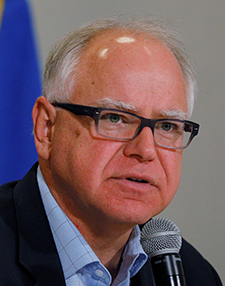
REUTERS/Brian Snyder
Gov. Tim Walz
But Abeler said the “preponderance” of $1 billion for HHS should be for long-term care and insists he believes a long-term care industry telling him that built-in payment hikes won’t be enough and that $820 million is needed to stabilize the industry. Cullen said the cost-based system for reimbursing nursing homes assumes “traditional inflationary increases” but can’t adequately cover huge wage increase needed right now.
Schultz also said she’d prefer a special session, and said she felt like Senate GOP leaders are blocking a deal because they want to save more surplus money for their priorities next year when Republicans might control the House and the governor’s office.
In the meantime, the long-term care industry isn’t getting any of the surplus, which could lead to a host of consequences. One is in medical transportation for non-emergency situations, such as rides to get dialysis treatment. Forum News Service reported some providers have stopped taking some clients because Medicaid rates are too low.
Zwickey, from the Inter-Faith center in Carlton, said he’s concerned that without help seniors in the state are going to get hurt. At his center, they won’t even admit patients who have complex needs because of staffing problems.
“I’m concerned and disillusioned,” Zwickey said. “I don’t think they understand the crisis that we face.”
